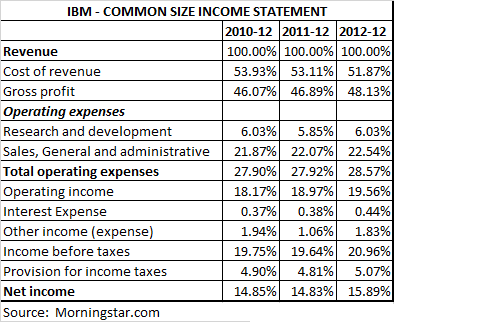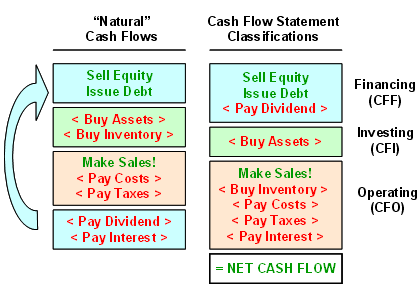Cash Flow Statement One of the 3 basic Financial Statements
Post on: 23 Апрель, 2015 No Comment

What is this report and why do I need one?
The Cash Flow Statement is one of the 3 basic accounting financial statements. The other two are the Balance Sheet, and the Income Statement.
A Cash Flow Statement can be one of a couple different varieties, but I’m going to focus on this simple example below, starting with the beginning cash balance for the period.
This Statement of Cash Flow has 3 sections, Operations, Investing Activities, and Financing Activities. All that means is we’re analyzing our cash inflow and outflow from day to day business (operations), from buying and selling assets and investments (investing), and from borrowing money and buying or selling stock in our business (financing). Of course, you’ll only have the stock issues if your small business is a corporation.
In the first section, Operations. we look at our cash flow from day to day business.
This statement shows us our cash inflow was receipts from customers of $693,200.
Our day to day uses of cash were buying inventory, paying for general expenses (rent, utilities, etc), paying payroll, and paying interest and taxes. This left us with $147,900 in cash left over, so we have a net inflow of cash from operations. This is good. It means our small business is paying for itself and then some.
If the final number in this section was negative, then we’d know our small business was not covering the basic expenses. Some decisions would have to be made on how to improve the situation. For example, cut expenses or increase sales.
The next section is Investing Activities.
Cash inflows would be sales of assets or investments. Here in this example we have a sale of equipment.
The cash outflows (or uses of cash) in this section of the Statement of Cash Flows is a purchase of equipment.
What probably happened here is this company sold an old asset and purchased a new one. This has caused a negative cash flow from investing activities.
The last section is Financing Activities.
In this section, you might see receipts from selling some of your company stock or borrowing funds from a bank, and payouts for things like buying back your company stock, paying down a loan, or paying one off, and issuing dividends. Again, if your small business is not a corporation, you won’t see this type of activity. You would see borrowing or paying off of loans, though, just not the stock activity.
So, to summarize the Cash Flow Statement above, this company started out their year with $15,700. Throughout the year, the business contributed $147,900 in cash from day to day business, used $41,400 to purchase equipment, and used $87,000 paying down loans and issuing dividends. This all left them with $19,500 in cash at the end of the year. Which is better than they started with, and that’s a good thing.
What does that mean to you?

You might say, I only run a small business, how would this help me?
Well, a Statement of Cash Flows tells you how much cash your business has, how it’s used, and how you can improve your cash situation.
How, you ask?
Do you have a lot of cash on hand? Nice problem to have, right? Well, the Cash Flow Statement shows you some options. Look at the operations section. You could pay off some bills. Look at the investing section. You can buy some equipment or invest in securities, or maybe even a side business or new location. Look at the financing section, you could issue dividends or pay down a loan.
Have a negative cash flow? The Statement of Cash Flows can also give you an idea of how to improve that flow. Cut expenses, sell some equipment, borrow some money, sell an investment, etc.
Not sure where your cash is going?
The Statement of Cash Flows is a great way to find the answer. Right here in one report you’ll find where your cash went. Maybe it went to pay bills and payroll or make loan payments.
So, you can now see that the Cash Flow Statement is very useful for your small business.
A Cash Flow Analysis, also called a Cash Flow Forecast, is a great way to see how your small business will be doing for the next few weeks, months, or even years.














